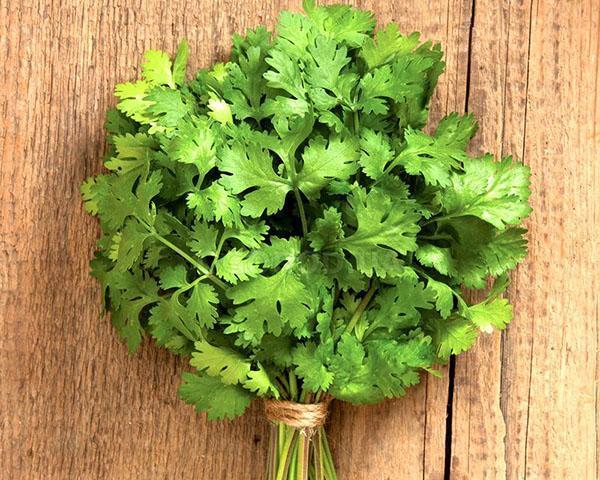Happiness herb coriander in all its variety
 Two-faced cilantro impresses with its aromatic greens and spicy taste of small grains. It is often called the herb of happiness coriander. The plant has rightfully earned such a resounding title due to its unique healing properties, as well as an amazing variety of varieties. Having met each of them, you can fall in love with at least one. The people know him by such names as bedpiper, kalyandra and kishnets.
Two-faced cilantro impresses with its aromatic greens and spicy taste of small grains. It is often called the herb of happiness coriander. The plant has rightfully earned such a resounding title due to its unique healing properties, as well as an amazing variety of varieties. Having met each of them, you can fall in love with at least one. The people know him by such names as bedpiper, kalyandra and kishnets.
Spice is the highlight of Caucasian cuisine. It is used in combination with meat (in the preparation of kebabs) or fish. But vegetable dishes acquire a completely new look with the specific flavor of the seasoning.
Happiness herb coriander - a new look
You can observe the snow-white flowering of the culture in the form of porridge from July to August. With its unpleasant aroma, the herbaceous plant attracts a swarm of insects. After all, everything in it - leaves, branches, and fruits - emits a sharp stench. However, as soon as the grains ripen, they acquire an amazing spicy smell.
Many people believe that it makes no difference which variety of coriander happiness herb to grow in their country house. However, there are several of the most popular varieties that are difficult to resist. These include:
- "Venus". Early ripening culture of compact height (70-80 cm). Most often it is used for preparing salads, as well as for preparing dry herbs.
- "Picnic". 35 days pass from germination to consumption. Curly bushes with large carved leaves stretch up to only 40 cm. Productivity - 3 kg / m².
- Borodinsky. The first batch of greens is cut off just 40-45 days after germination. At the same time, up to 2.5 kg of cilantro is collected from 1 m².
The specific aroma of the fruit resembles the smell that bedbugs give off. Perhaps this explains the origin of the name of the seeds. From the Greek language, the word "koris" is translated as a bug.
Despite such unflattering characteristics, the spice is very useful, and most importantly, necessary in the household. It gives food a special aroma and taste. With its help, diseases of the liver and pancreas are treated.
Growing features
Seeds germinate at 6-8 ° C. Therefore, the culture can be planted in the garden in early spring. Young specimens can easily withstand up to -7 ° C. Nevertheless, for the full development of seedlings, warm conditions are required - 20-25 ° C. The need for soil moisture in cilantro increases every day and reaches a maximum by the time of flowering.
The growing season of the grass is very short - up to 45-50 days. Because of this, seedlings are regularly watered. If the spice suffers a deficiency of moisture, as well as lighting, then it immediately begins to sprout flowering stems.
The herb of happiness, coriander, needs fertile soil. Its predecessors in the garden should be legumes, cucumbers, potatoes and cabbage... Seeds are planted in grooves at a distance of 40 cm, trying to deepen to 2-3 cm. If you sow cilantro in moist soil, then seedlings will appear after 2-3 weeks.